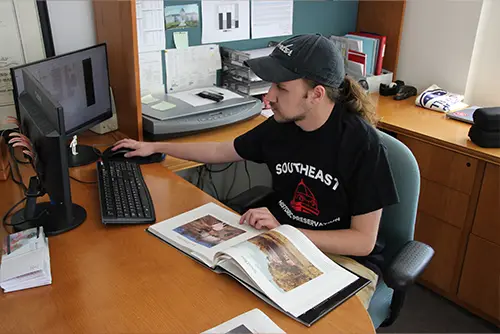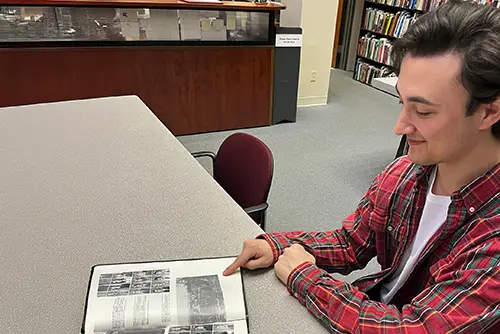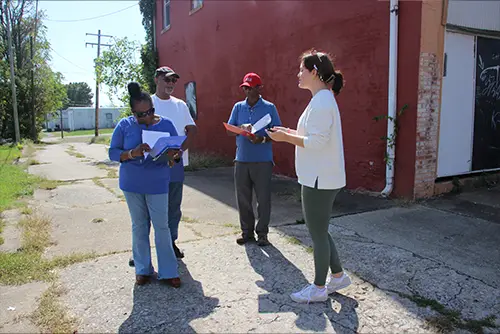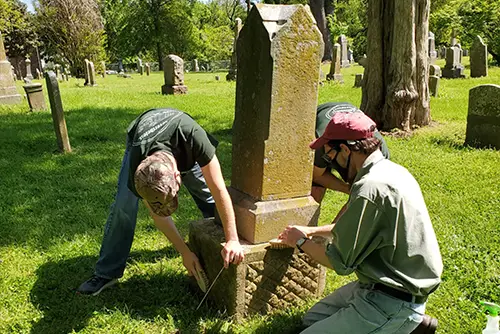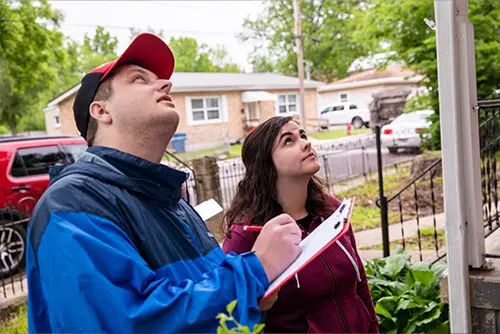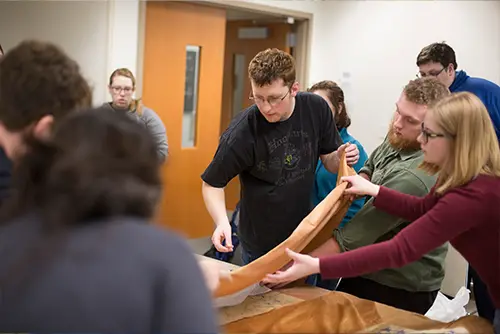Where History Comes to Life, One Story at a Time
Uncover powerful stories hidden in forgotten documents at the Cape Girardeau Center for Regional History. Our students transform into storytellers and historical detectives, revealing the untold narratives of Southeast Missouri through innovative research and passionate investigation.
Working with expert faculty, students create living history by documenting buildings, mapping community stories, and preserving local heritage. We don't just study the past—we bring it to life, turning historical fragments into meaningful connections that matter to our community.
Dearmont Dormitory Documentation
Before Dearmont Hall's demolition in 2025, our students captured its legacy through photos, archive research, and interviews with former residents. Their work will live on in a special exhibit in the new Roy Blunt Health Professional building.
Collaborative Discovery: Learning Beyond the Classroom
Here, education happens hands-on. Our students don't just read history—they create it. Working alongside faculty mentors, our researchers partner with local organizations, museums, and community groups to uncover, document, and preserve the stories that define our region. From documenting historic buildings to creating interactive digital archives, every project is an opportunity to gain real-world skills while making a meaningful impact.
Current Projects
-
Museum of Typewriters
Explore the Marler Typewriter collection and learn about the history of the typewriter, QWERTY, and how having a personal printing press allowed individuals to distribute information independently. Explore Keys to Progress. -
Haarig District GIS Story Map
Explore the forgotten layers of a historic neighborhood through interactive mapping that brings Cape Girardeau's past to life, street by street. Explore The Haarig District. -
The Green Book Project
Reveal the powerful stories of African American travelers and the safe spaces that preserved dignity during challenging times in our region. Explore the Southeast Missouri Green Book Homes. -
Old Lorimier Cemetery
Discover Cape Girardeau's history as you virtually tour this historic site and learn about the people who shaped our community. Explore Old Lorimier Cemetery.
Preserving Our Shared Heritage
The stories of Southeast Missouri live in more than just textbooks—they live in our community. Through meticulous research and innovative preservation techniques, our students are creating a living archive that connects past to present. Whether documenting a historic neighborhood, helping a local hospital celebrate its legacy, or uncovering the hidden narratives of communities, we're doing more than research. We're building a bridge between generations, ensuring that the rich tapestry of our region's history remains vibrant and accessible.
Digital Gateway
-
Preservica Digital Archives
Explore thousands of historical documents and photos that bring Southeast Missouri's rich past into the digital age. Explore Preservica Digital Archives -
GIS Story Maps
Journey through interactive maps that transform historical research into visual storytelling. -
Research Projects
Discover the innovative ways students are preserving and sharing the hidden stories of our region.
Your Future, Shaped by History
In the Center for Regional History, your academic journey becomes a launchpad for professional success. Our students don't just learn—they lead. By engaging in real-world research, developing cutting-edge digital preservation skills, and building connections with local organizations, you'll graduate with a portfolio that sets you apart. From historic preservation specialists to museum curators, our alumni prove that understanding history isn't just about the past—it's about shaping the future.
Cape's Original Treasures
Cape Girardeau's Historic Preservation Commission and SEMO students work together to better represent our historic sites.
“ The Center for Regional History has allowed me to gain practical experience in an engaging and collaborative environment. Through The Center for Regional History, I have formed strong relationships with faculty, participated in projects tailor-made to my interests, and gained the skills necessary to succeed in the field of public history. From Section 106 projects to National Register of Historic Places nominations, the center has given me the confidence to enter the 21st-century workforce. ”
Student Opportunities
-
Forge Connections
Build friendships and professional networks while uncovering the stories that shape our community's history. Explore Student Organizations -
Directed Research
Work one-on-one with faculty to explore topics you're passionate about. Explore Experiential Learning. -
Historic Preservation
Learn cutting-edge techniques to protect and share the region's most important historical treasures and memories. Explore the Historic Preservation Program -
Student Employment
Turn your passion for history into real-world experience with meaningful work that makes a difference. To find out more about student work Opportunites, see the Team Directory
"Our students bring incredible energy to these projects. Watching them get excited about uncovering our region's stories is the highlight of my work."
Dr. Steven Hoffman, Director

Historic Preservation Association
Connect with other students who share your passion for history. Not a history major? Not a problem! We welcome all majors. Come join us for field trips to historic sites, guest speakers and workshops, social events, volunteer opportunities, research collaborations, and more!
Cape Girardeau, MO 63701


